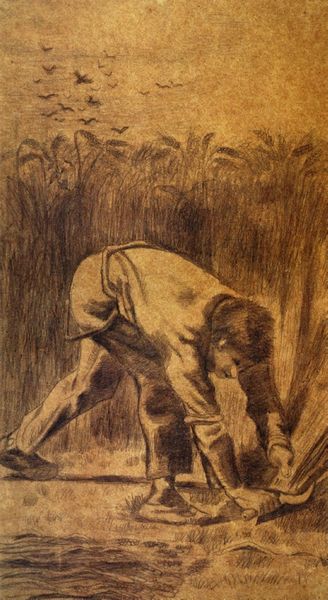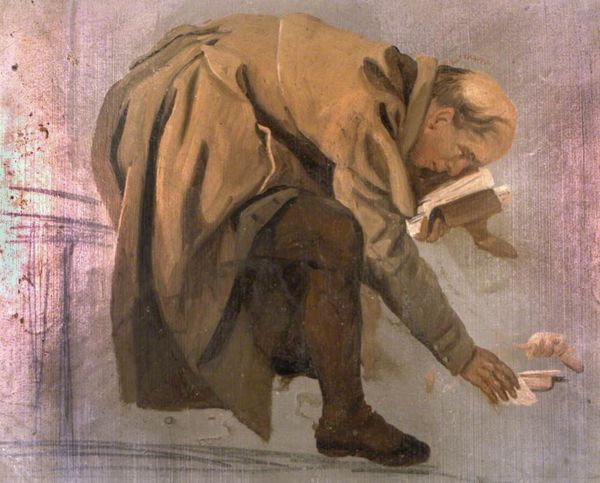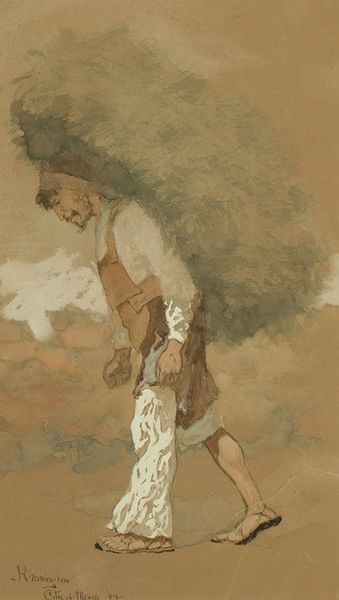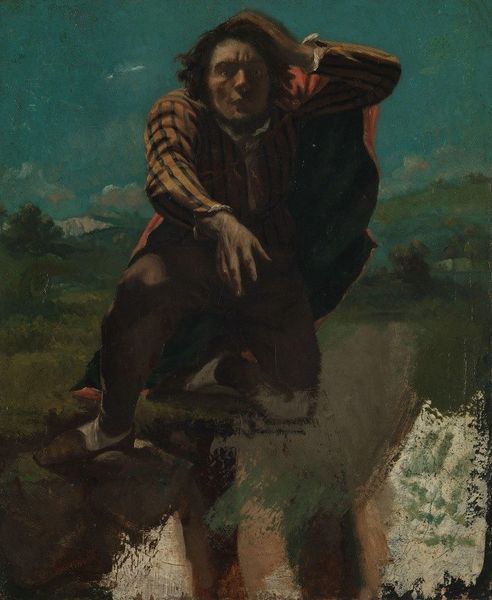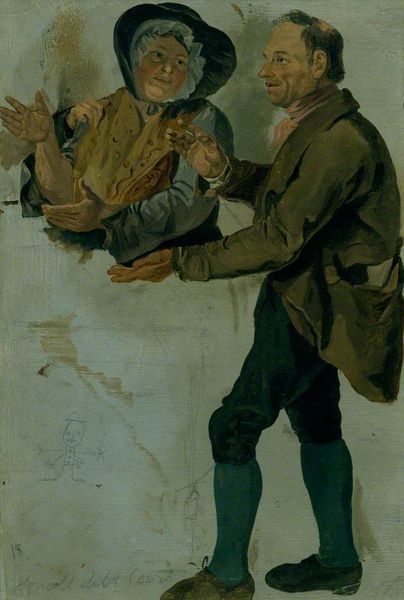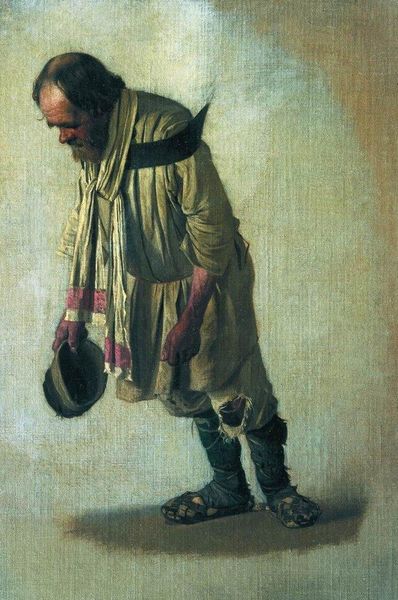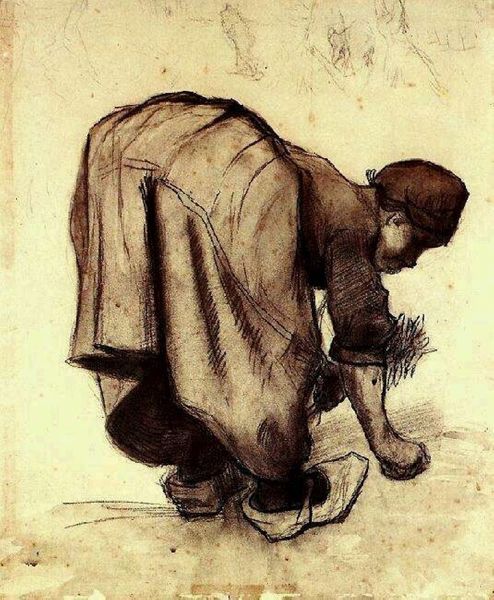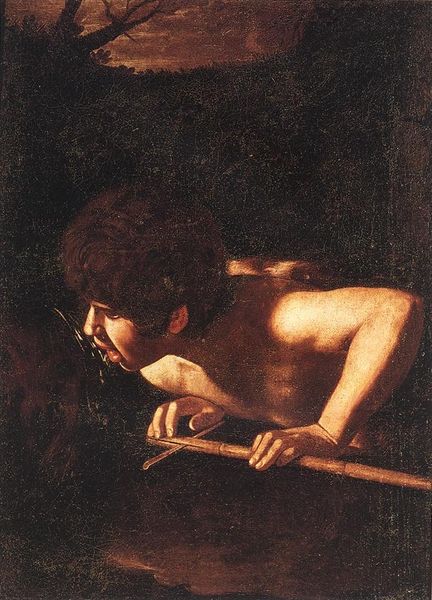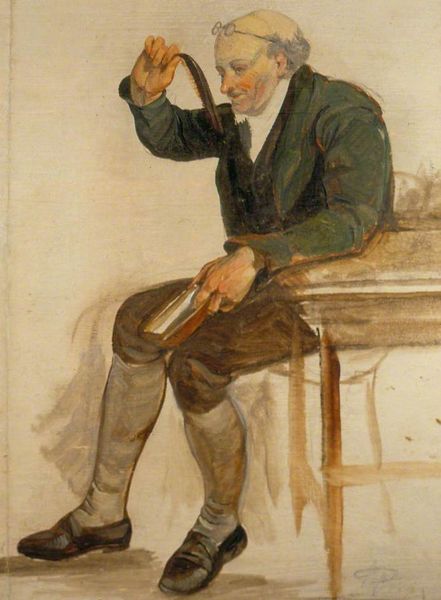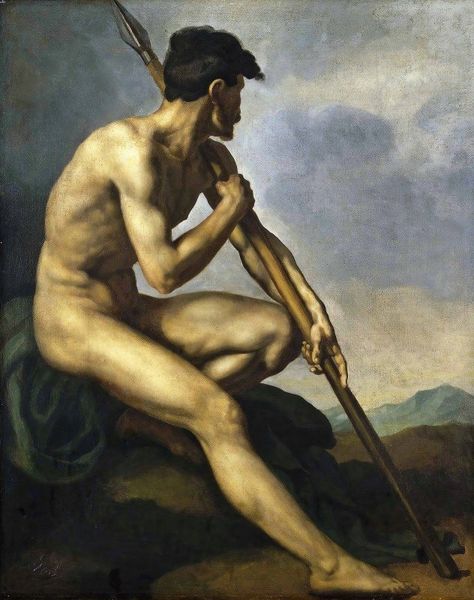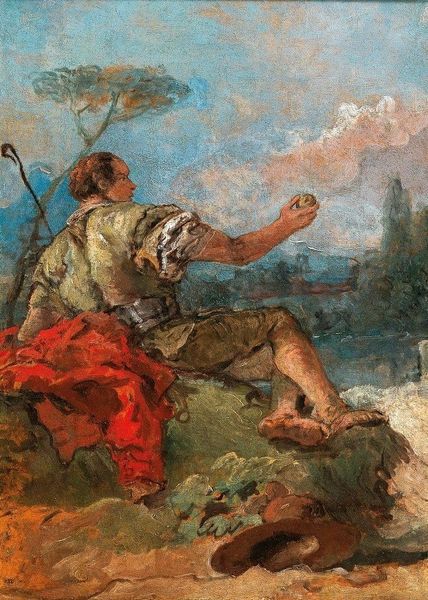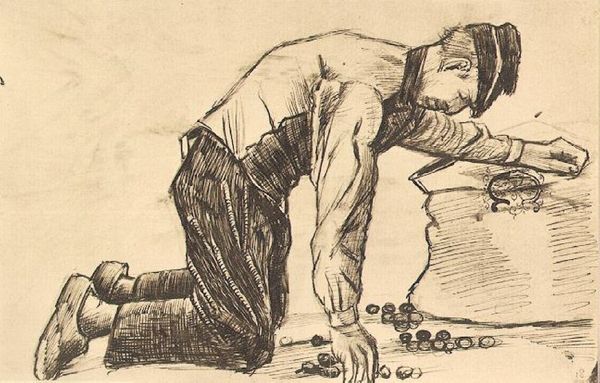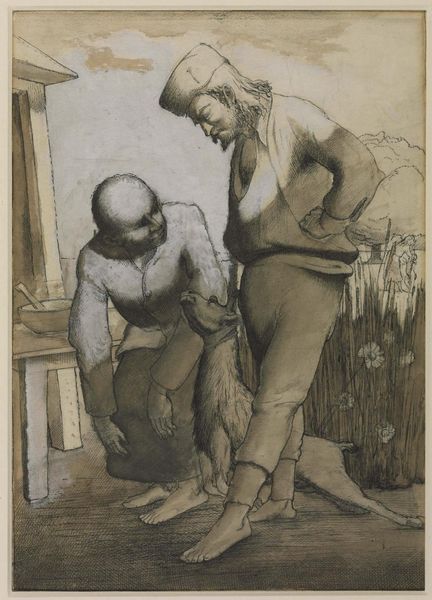
painting, oil-paint
#
portrait
#
painting
#
oil-paint
#
charcoal drawing
#
oil painting
#
portrait reference
#
romanticism
#
genre-painting
Copyright: Public domain
Editor: This is George Harvey's "Boys and Byke," painted in 1827. It looks like an oil painting. What strikes me is the boy’s intense concentration as he’s working on something—the focus seems so serious, almost solemn. How do you interpret this work? Curator: It’s a genre scene offering a glimpse into 19th-century life, but also invites us to think about labor and childhood. We have to consider the historical context. The figure is engaged in physical work; bare feet, rolled up sleeves--a portrait of working-class youth. I wonder, what social commentary, if any, is Harvey trying to offer? Does he want us to see the nobility of labor, or the exploitation? Or both? Editor: It's interesting that you focus on his labor; I initially saw the scene as innocent, but your points shift the meaning. What does the artwork have to say about child labor laws, if anything at all? Curator: That’s exactly the kind of discussion this piece demands! There were essentially no child labor laws in 1827. By representing a young boy engaged in physical labor, Harvey subtly draws attention to the societal expectations and economic realities of the time. It wasn't an explicit activist statement but implicitly captures the era’s relationship with work and the vulnerability of youth. Editor: Thank you, this definitely encourages a deeper look, not just at what's in the painting, but what it means. Curator: Precisely. By understanding these historical nuances, we see that artworks aren't just pretty pictures; they are embedded in social dialogues.
Comments
No comments
Be the first to comment and join the conversation on the ultimate creative platform.
